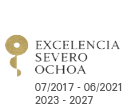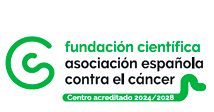
2018/06/27
Knowledge transfer from Basic Liver Research to NASH Drug Therapy Research
Galmed Pharmaceuticals recently announced that their lead NASH drug candidate, Aramchol, had achieved an FDA- regulatory-approvable endpoint demonstrating NASH resolution in the Aramchol Phase 2b, 52-week ARREST trial. Aramchol is a conjugate of cholic acid and arachidic acid, a first-in-class member of a novel family of synthetic Fatty-Acid/Bile-Acid Conjugates (FABACs). These positive results mean that this new drug is on track for Phase III initiation and futher clinical evaluation of its efficacy in NASH.
Pre-clinical studies on Aramchol were carried out at the AAALAC-certified animal facility from the Severo Ochoa Excellence Research Center, CIC bioGUNE, led by Prof. José M Mato, General Director, and Prof. Juan Anguita. Professor Mato had described in a recent publication in collaboration with OWL Metabolomics that Aramchol exhibits a specific mechanism-of-action that targets both the metabolic alterations characterizing NASH-accumulation of lipids, lipotoxicity and oxidative stress as well as liver fibrosis (Hepatol Commun 2017 Nov;1(9):911-927)
Aramchol’s unique dual mechanism-of-action was first evaluated by a joint CIC bioGUNE/OWL Metabolomics research teams together with Galmed Pharmaceuticals and then further validated in patients with biopsy verified NASH within the latest ARREST trial Phase 2b update. This focused scientific collaboration is a very good example of how basic liver research knowledge can be transferred to ongoing pharma research from the academic setting with the ultimate goal of providing NASH patients effective therapies.
About NASH, fatty liver
Non-alcoholic steatohepatitis (NASH), a clinically-relevant progressed form of non-alcoholic fatty liver disease (NAFLD), is histologically defined as the presence of fat (steatosis) together with inflammation and hepatic damage. NASH can evolve to major hepatic damage, advanced fibrosis, cirrhosis and hepatocellular carcinoma (HCC). In the last few decades, the incidence of NAFLD has expanded rapidly and is currently the leading cause of chronic liver disease with a prevalence ranging between 10 and 40% in the adult population of Western countries, which progress to NASH in approximately 10-30% of the cases.
In the USA, NASH is currently the second leading cause of liver transplant, and it has been estimated that it will be the first cause in the foreseeable future.
Currently, there is no approved drug for NASH and treatments are aimed to control the associated comorbidities such as obesity, diabetes and hyperlipidemia. Today, the definitive diagnosis of NASH depends on performing an invasive liver biopsy, a medical procedure with some controversies due to the variability in sampling variation, inter-observer variability, high cost and patient safety risks. This is one reason many current NASH patients are not appropriately diagnosed.





